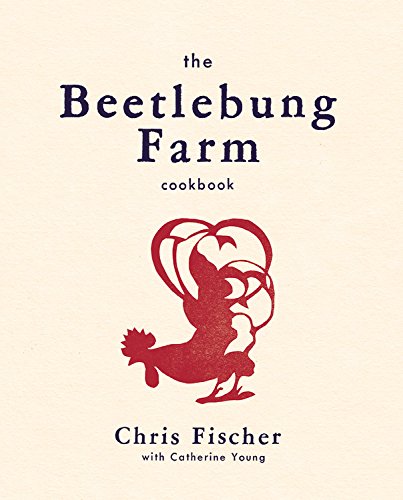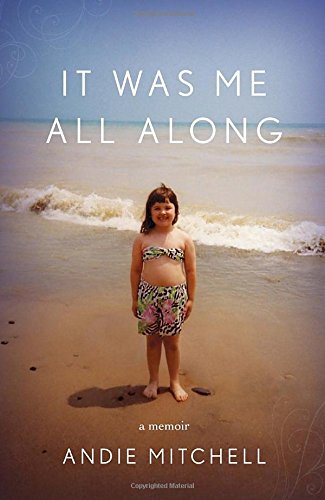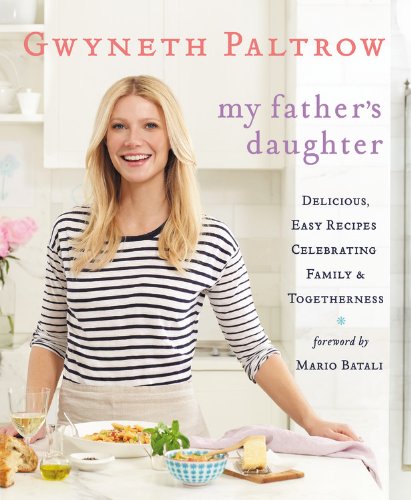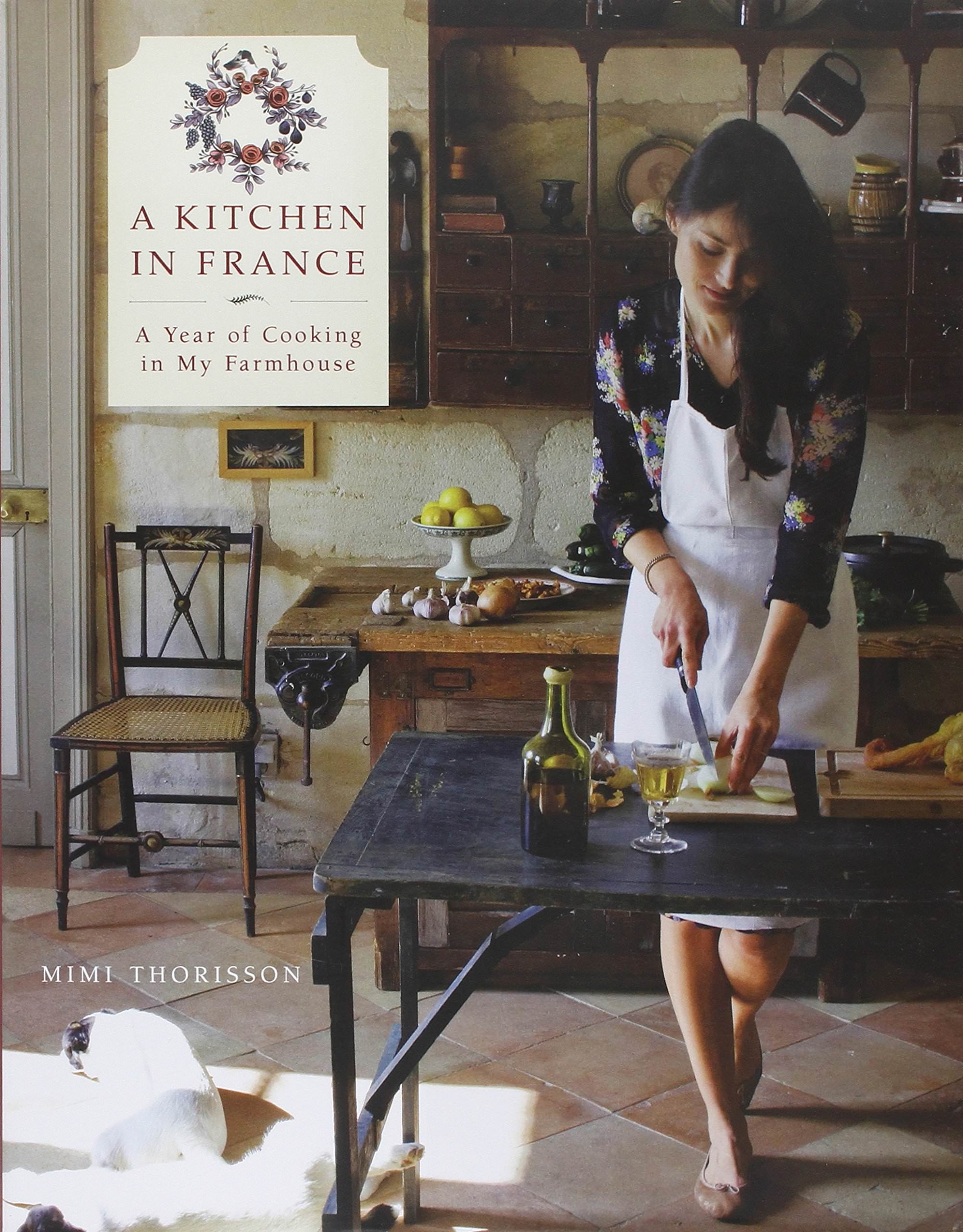Saturday October 24, 2015

Jerusalem: A Cookbook
“The beauty of food and of eating is that they are rooted in the now. Food is a basic, hedonistic pleasure, a sensual instinct we all share and revel in. It is a shame to spoil it.”
The best way to know a country, region, or city is through its food. However, one may seem at a loss in trying to set Jerusalem in such definitive constraints. The city is challenging to unify in a sweeping description of its cuisine and culture, but in Jerusalem, with authors Yotam Ottolenghi and Sami Tamimi being born in opposite ends of the city, we are given two different outlooks on the city and its culinary offerings.
In the introduction, they define the essence of Jerusalem, saying it is made up of “very personal, private stories immersed in great culinary traditions that often overlap and interact in unpredictable ways, creating food mixes and culinary combinations that belong to specific groups but also belong to everybody else.” With this, we quickly realize the book’s paradox: that all the different ingredients and traditions centered around food are brought together by one central similarity: place.
The local cuisine is challenging to identify, but once you break apart the varying layers of culture and influence, you find that it’s not impossible to discern. Ottolenghi and Tamimi note the specific consistencies a shared location permits: the universal use of chopped cucumber and tomatoes to make a salad, the reliance upon vegetables stuffed with rice and meat for a hearty meal, or the incorporation of olive oil and lemons into almost every dish.
Spices abound in the Roasted Eggplant with Fried Onion and Chopped Lemon, with green chiles, cumin, sumac, and a saltiness supplied by large chunks of feta cheese. Coarsely-chopped lemon adds a final hit of freshness to this starter. They suggest pairing it with a lighter main to balance out the heaviness of flavors that gives the recipe its appeal.
The section titled “Stuffed” pays tribute to one of the traditional cooking techniques in Jerusalem. My favorite recipe is the Stuffed Artichokes with Peas and Dill. A mixture of blanched leeks, ground beef, egg, spices, and mint is loaded into artichoke bottoms and fried in hot oil just until the flavors start to seep out of the pan and cause you to salivate in anticipation. The artichokes then simmer away for an hour in a mixture of stock, lemon juice, and oil until the liquids have been reduced to a mere several tablespoons. The result is a dish bursting with flavor and a plate vibrant with greens. Served alongside Basmati rice and orzo, this is a meal that defines a city.
The desserts are a collection of pastries and confections that are not nauseatingly-sweet but rather prepared so as to bring out their natural flavors, like the Poached Pears in White Wine and Cardamom. In the headnote, the cardamom is described in its similarity to allspice and cinnamon, possessing its own powerful aroma which brings greater dimension to the fruit. Poaching the pears with this spice in conjunction with the fresh pungency of white wine and the final intensity given in just a half teaspoon of saffron threads gives you a beautiful, bold color and a satisfying dessert that calls for only a dab of crème fraîche spooned over top.
In Jerusalem, we get a sense not only of the foods specific to this city, but of the people and the unique lifestyles that have been preserved here for so many years. We can amass different recipes and techniques to try to create a culinary profile, but this seems impossible with so many. Ottolenghi and Tamimi do their best, but they accept that Jerusalem is a city rich in different cultural traditions with a collection of flavors to match.
Saturday October 17, 2015

The Beetlebung Farm Cookbook: A Year of Cooking on Martha's Vineyard
Martha’s Vineyard raises thoughts of long summer evenings spent lounging on the dock or entire days out on the water. For Chris Fischer though, despite having cooked at restaurants in New York and London, he never lost the image of his grandparents’ farm, only several acres of land dedicated to the produce that would accompany their daily catch from the sea, a rabbit taken in from the woods, or serve as the primary part of a meal on its own.
In The Beetlebung Farm Cookbook, Fischer reflects on the farm, how his grandfather prepared and cared for it, and the appreciation for the land it encouraged: “Poppy’s garden was always planted densely, first with peas, onions, and shallots, as soon as the ground could be worked. Then came beets, carrots, lettuce, and potatoes. As the days grew longer and the crowds began to arrive, he would plant his beans, tomatoes, green peppers, and eggplant, the rows in the garden supplementing those in the field. He got his tomato cages ready early, all neatly lined up like soldiers, months before the plants would go into the ground. Then began the countdown of days until his vines boasted ripe beauties. Anticipation, he often said, was his favorite part of farming.”
This book shares the recipes that represent the farm’s essence, the challenge of each day’s work but also the extreme reward in harvesting what you have worked all season to produce. Each section is prompted by a menu of the recipes which follow, though first given context by Chris’ writing, often a story or vignette reflecting upon his life at Beetlebung and the memories he’s gathered in the field and around the table. Though the subjects of Chris’ writing could easily turn his style to the sentimental, he restricts himself to a territory that is nonetheless reflective and beautiful:“I learned many things from Serena, including how to properly make a salad. She was very fond of the greens mix Marie sold. In those days Marie tended toward a combination of mustard greens, red Russian kale, several types of lettuce, and mizuna, all picked quite young before the spiciness of the mustards got too intense. She finished each bag with fennel fronds, nasturtium flowers, and fresh leaves and blossoms from the herb garden. Serena began my lesson by emptying a bag of the cleaned greens into an over-sized salad bowl. ‘It has to be big,’ she explained, ‘you need plenty of room to toss.’ [...] We’d lightly salt the salad then gently toss it once or twice before eating it together -- the perfect mid-afternoon snack.”
Everything about this book moves slowly -- we pour over the recipes excitedly, but stop ourselves to savour them all the way through. We imagine ourselves sitting at the table of one of Chris’ all-night dinners, beginning early in the evening with a marinated Anchovy and Island Egg Crostino, waiting until well after midnight to begin your Maple Ice Cream, absorbing the melted pools with his Ginger Cookies.
I’m most drawn by the Beet Cake with Fennel Icing, the beets lending a moist crumb and vibrant color to the cake, with a beet jam sandwiched between the two layers. This is the natural and time-honored practice that many now have substituted with red artificial coloring. Fischer takes it back to the land, creating something that seems as imaginative as it is practical. Though children are usually the last to refuse a dessert, Chris suggests revealing the ingredients only after they’ve tried it. Nutrition in cake form -- a brilliant way of getting your kids to eat vegetables.
12 generations of family legacy finds its way into every aspect of the farm. Reading through the recipes and meditative prose, we get a sense of the land’s profound effect upon Fischer’s approach to cooking and its even greater effect upon his life. We learn alongside him that family tradition serves as the foundation for what we create in the present. It is a lesson we learn from every ingredient, every menu, and every page.
Saturday October 10, 2015

It Was Me All Along: A Memoir
It Was Me All Along is not a cookbook. Save for the Sour Cream Fudge Cake recipe, it is instead Andie Mitchell’s heartfelt reflection on the challenge of overcoming and understanding her relationship with food. At times funny, at others deeply depressing, it is a beautiful narrative which shares the central issue food poses for many of us: a regret in consuming it that overpowers our inability to enjoy it.
Mitchell begins the food memoir by explaining her use of food as a young girl. Because she spent so much time as a child without others around, she allowed food to substitute human comfort, trying to suppress her overwhelming sadness. Throughout the book’s pages, she develops a portrait of food as a simultaneous friend and enemy, something she came back to obsessively to soothe her feelings of isolation while also striving to avoid it the best she could.
This is a book for those who know the feelings of crushing defeat in failing to lose weight, or even those of us who have always maintained a healthy relationship with food in our lives. In forging a balanced connection with food, Andie learned where it belongs, defeating her food addiction and regaining her life.
Everyone has a history with food. Though we may not share Andy’s story and journey in bringing food to its rightful place, we can benefit from her prose by realizing that food does not have to be something to fear; it is something that brings us joy and happiness in the preparation for and sharing with others, but only if we allow it to be.
“Maybe the difference between a standard meal and a great meal has as much to do with its taste as it does my perception … And that was the difference in me. The change I’d undergone -- from someone who ate to capacity to distract her mind; into someone who purposely tasted every morsel -- was not unconscious … There was a meaningful nature to eating. It was celebrated; it was an activity done three times per day. No more. No less.”
Saturday October 03, 2015

My Father's Daughter: Delicious, Easy Recipes Celebrating Family & Togetherness
Gwyneth Paltrow is a woman of elegance and taste, who puts value on involving family with the preparation of meals, understanding its importance from spending time in the kitchen with her father. Following his death in 2002, Gwyneth wrote My Father’s Daughter as a thanks for everything his cooking lessons gave her -- the feeling of connectivity that results from meeting with loved ones around the table.
Paltrow and I share the same food philosophy -- that offering up homemade meals is one of the most direct ways of communicating your love. She admits that the kitchen is where she feels the closest, the deepest connection to her father, and where she recalls the food memories touching beyond a simple taste or smell. They bring to light what a deep understanding of ingredients offers, how it conditions us so that we step away from each meal more present and more aware than before we sat down.
The photos are a treasure trove of archival shots framing the time Gwyneth and her family dedicated to the kitchen. The book progresses from the slightly-faded pictures of her and her father to the brighter images of Gwyneth and her own children in the present, showing that though generational shifts are inevitable, how we express compassion for one another doesn’t have to change.
My Father’s Daughter starts off with simple staple recipes -- everything from stocks to vanilla bean sugar -- homemade essentials which if you keep a steady supply of at all times, you’ll never run short of flavors to heighten your dishes. She moves from here to salads, looking back upon her upbringing in Southern California and the region’s beautiful produce. This sets the precedent for vegetable-dominated meals, plates of varying colors, all vibrant in their wide array of hues. She puts her love of vegetables to work in her Marinated Gigante Bean Salad with Grilled Shrimp. Mixing the delicate watercress with enormous white butter beans and shrimp marinated in olive oil and seasoned with a pinch of both salt and pepper, this becomes a heartier, more substantial dish that would satisfy any eater as a midday meal.
Like a true Californian, Gwyneth can’t avoid dedicating an entire section to burgers. She prefaces this with an explanation of her father’s own insatiable hunger for grilled meat sandwiched between two halves of a golden bun. Gwyneth takes inspiration from the East Coast in updating her father’s favorite hot dogs with her Grilled Tuna Rolls. She makes a vinaigrette that combines the hit of flavors from miso paste, agave, and rice wine vinegar and tops the salad with sliced shallots and cilantro leaves to serve. The recipe is a tribute to the unknown fillers inside her dad’s old favorite -- nostalgia for nostalgia’s sake alone.
Paltrow reflects happily upon the ease, accessibility, and ultimate deliciousness that any pasta dish brings. With a craving for a big bowl of noodles and something crispy to go on top, she developed her Fried Zucchini Spaghetti. The recipe is straightforward and fast, involving simply cooking the pasta until al dente and then tossing with zucchini made crisp in a hot bath of olive oil. Parmesan cheese dominates the sauce, adding creaminess to the bowl and comfort to your stomach.
I love that the final recipe is Gwyneth’s Favorite Homemade Hot Fudge. Dark chocolate, heavy cream, and rice syrup, it is the ideal accompaniment to anyone’s favorite sweet. Whether you want it with fruit, your dad prefers it drizzled over ice cream, or your kids use it as a dip for a not-yet-sweet-enough cookie, follow your instinct. It is always your choice.
Saturday September 26, 2015

Modern Jewish Cooking: Recipes & Customs for Today’s Kitchen
Leah Koenig’s childhood meals took inspiration from her Midwest hometown and the traditional Jewish food of her mother’s heritage. Modern Jewish Cooking straddles the divide between past and present, giving time-honored recipes a new perspective while retaining the memories their flavors convey.
The recipes remain the same in essence as Koenig experiments with subtle changes to make them her own. It isn’t changing them completely, but more so updating them with the flavors Koenig has come to prefer. She recalls the varying textures of the matzo balls of her youth, but proves she doesn’t fear change in adding a healthy amount of heat by way of sautéed jalapeños and shallots.
She uses the often bland matzo crackers as the base for her Matzo Granola with Walnuts and Coconut. The addition of honey, maple syrup, and cinnamon bring flavor to this slightly sweet but still wholesome morning meal. Koenig suggests it as an option during Passover, when other carb-heavy breakfast sweets become off-limits, but over a bowl of yogurt or splashed with a cup of milk, the granola makes for a delicious, casual, and light start to any day.
Koenig relies upon literary inspiration as the guide for her Spinach Shakshuka, having fallen for an in-depth description of its creation and taste. She creates a base of baby spinach wilted with the flavors of a small jalapeño, garlic, coriander, and cinnamon. Atop this sit four beautifully-poached eggs, their whites just barely set and the yolks threatening to pour out in gorgeous, sunny yellow streaks. This North African dish proves the perfect comfort for weeknights when cooking time is limited, but when you can spend a few extra moments sopping up the final bits with a hearty tear of bread.
Reinvention is a form of honoring the joys of the past. Koenig knows that nothing is entirely separate from what came before it and strives to promote the traditions set by family members before her. She doesn’t want to lose Jewish culinary precedent in a world that is constantly changing and moving towards something that has never been seen, tried, or tasted in the past. However, she still pushes to “infuse history with a sense of innovation.” This results in a strong focus on making these dishes accessible to newer generations of cooks, those not yet entirely comfortable with navigating a Jewish chef’s kitchen filled with a foreign array of spices, or ingredients not yet familiar to their still-developing palate.
The book concludes with Koenig profiling Jewish holidays, from Shabbat to Sukkot, accompanied by menus and meal suggestions optimal for each celebration. She invites every reader, whether of Jewish descent or not, to join the table and celebrate this food.
Saturday September 19, 2015

A Kitchen in France: A Year of Cooking in My Farmhouse
Mimi Thorisson is the voice behind the famed food blog Manger. Her cookbook, A Kitchen in France, shares the blog’s focus; each are written as a reflection of her life documented by the recipes she loves. Her approach to food works against the stereotype of French cooking as pretentious or a compendium of flavors too varied and intricate to distinguish from one another.
A Kitchen in France goes beyond the fundamentals of food alone. Thorisson delves into the connections that food fosters and presents her readers with the French joie de vivre seemingly inaccessible to those who live outside its pastoral landscape.
The images capture the tranquility of her town - Médoc’s rolling hills and lush fields, which charm you with the fresh offerings reflective of the current season. Thorisson explains the abundance of asparagus in April and the locals’ haste to gather as much as possible before the season ends. She meditates upon the gift of quality ingredients, expressing the pleasure of a single asparagus stalk’s delicate tang in her Roasted Asparagus with Chervil, bringing out its flavor with a drizzle of olive oil and a sprinkling of sea salt. This method of cooking allows the asparagus to taste more like itself, more like how we expect it to when bringing it in from the garden.
We come closer to understanding France, its approach to cooking and lifestyle, with each of her recipes. Thorisson features photos of the country’s food artisans and foragers, highlighting the attention of all produce, even the care given to a single plum tomato, freshly-picked from the vine for the day’s market. This gives us a view of the landscape which lends a narrative to each recipe - the story of food we must acknowledge and share.
Page 3 of 6 pages < 1 2 3 4 5 > Last ›











